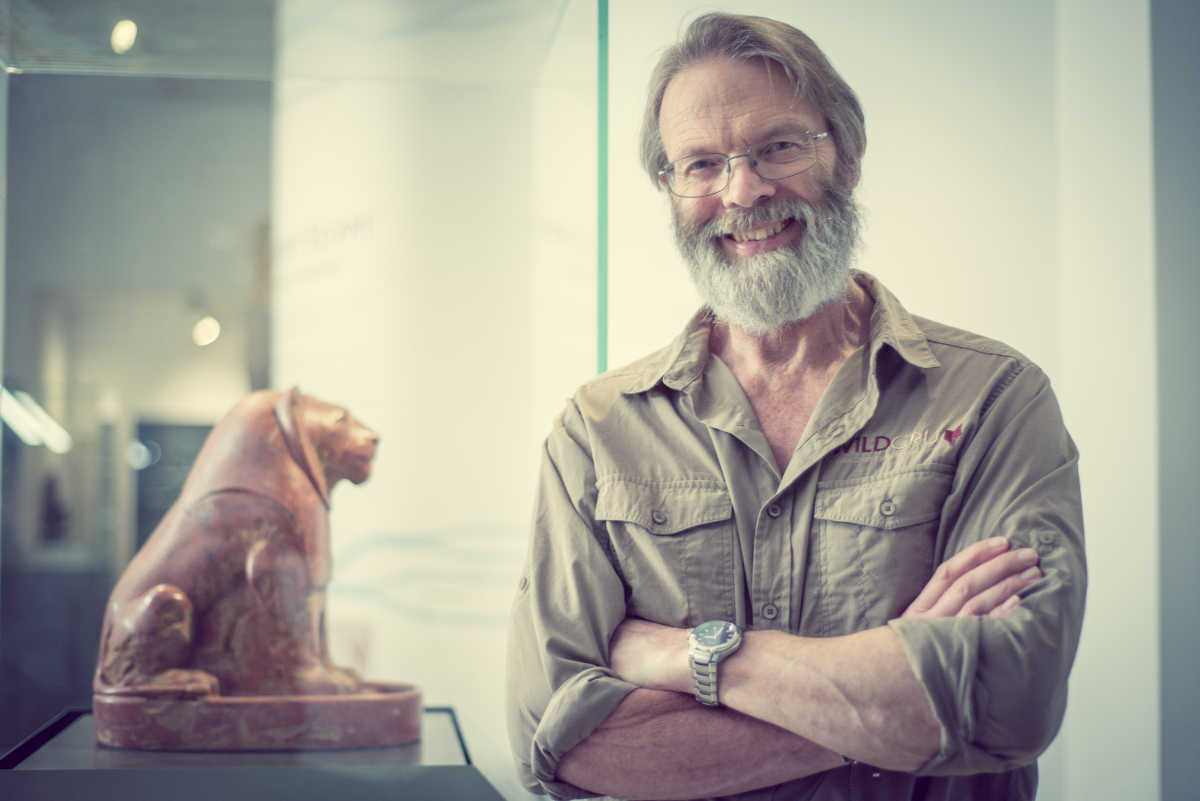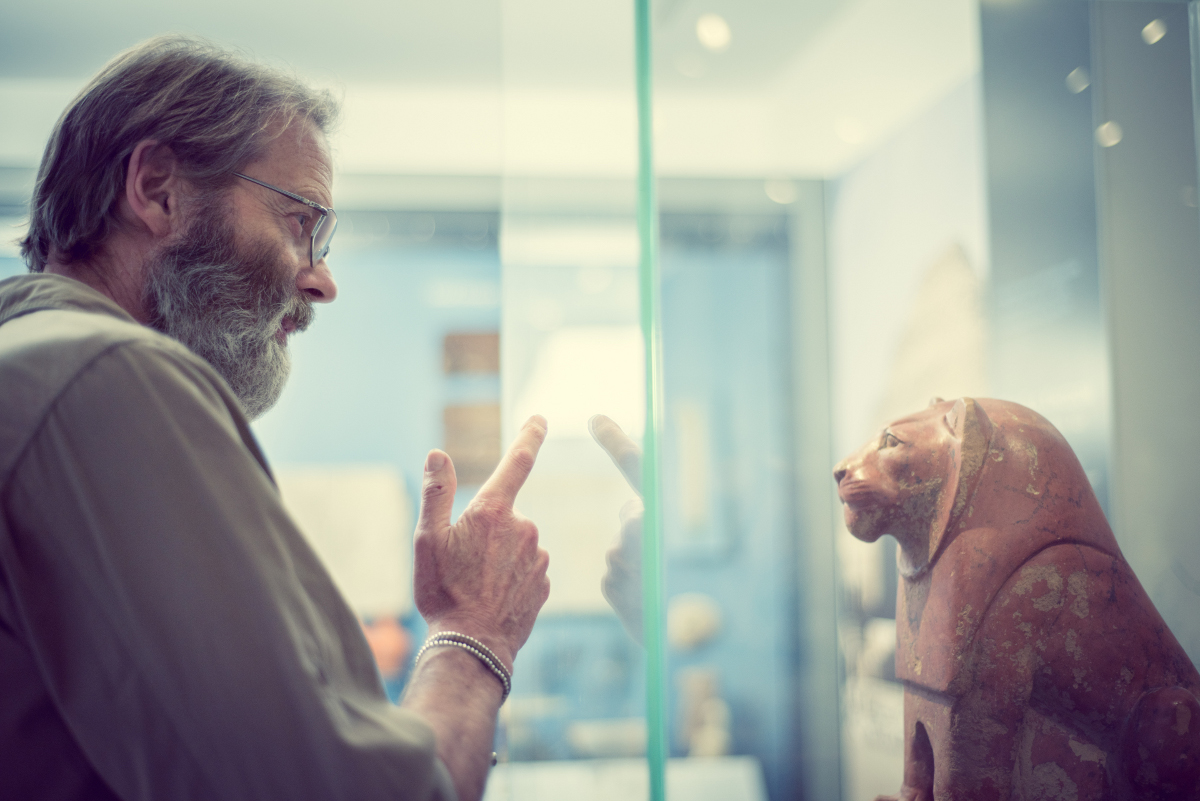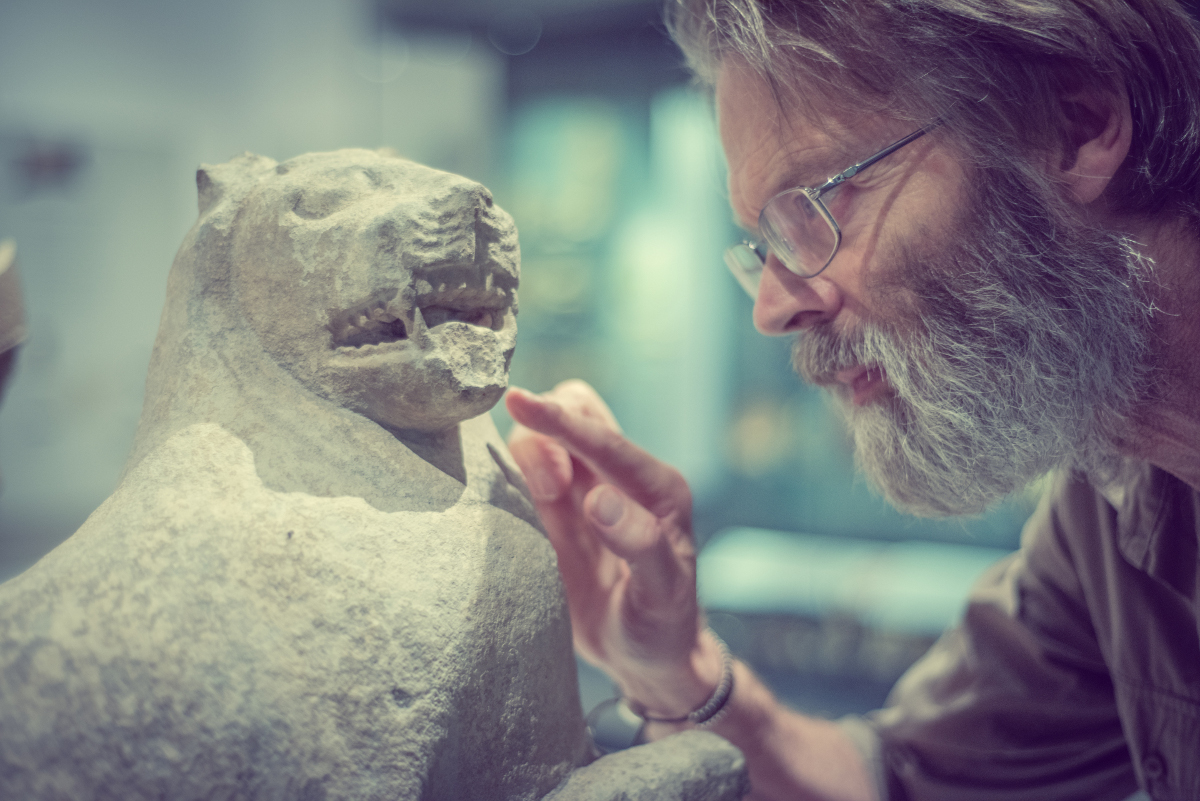News
Egyptian lions, manes and climate change – David Macdonald presents a podcast from Oxford Ashmolean Museum
In a brilliant initiative from Director of the Ashmolean Museum, Xa Sturgis, ten of Oxford University’s top academics were invited to prepare podcasts based on their perspective of a favourite item in the collection. The items, and the experts, are fascinating. For example, Professor Sarah Harper chose a mummified child, Professor Helen Watanabe-O’Kelly chose the Meissen porcelain chocolate cup and tea bowl and Professor Marcus Du Sautoy chose carved stone balls. WildCRU’s David Macdonald selected a lion excavated in 1898 by British archaeologists, and which dates from between 2,325-2,175 BCE, when it prowled the temple of the hawk god at Hierakonopolis in Upper Egypt. You can hear David’s podcast at: https://www.ashmolean.org/professor-david-whyte-macdonald-lion-statue#
David explains that the Hierakonopolis Lion is made of Nile silt, but what of real lions in Egypt? They were worshipped, sometimes trained to run alongside the pharaoh’s chariot and hunted. In 3500 BCE, Egyptian figurines showed everyday folk hunting lions with bows and arrows, amidst a long gone fauna of elephants, giraffe, hippos, wildebeest and African wild dogs. Later, during historic times hunting lion may have become the sport of kings: the oldest hunting records are taken from carved hieroglyphics detailing the prowess of Pharaoh Amenhotep III, who killed over 100 lions in the first decade of his reign which began in 1390 BCE. David tells how the last lion departed Egypt in the late 18th Century; there were lions in North Africa into the 1950s: the last one to be seen was glimpsed by passengers in a bus in Algeria (where, by the way, the last lion was shot in 1942).
In the podcast David speculates that the rather skimpy mane of the Hierakonopolis lion is an accurate portrayal of sparse manes adapted to a warming climate, characteristic of Egypt at the time. He concludes “Anyway, manes or not, lions have gone from Egypt, indeed from North Africa and the Middle East and Asia Minor. Probably, that’s no surprise to you. What might surprise you, and I hope it horrifies you, is that while scarcely a century ago 200,000 lions roamed Africa – today closer to 20,000 remain. If you marvel at the Hierakonopolis lion, surely you will treasure the wild lions that inspired him, and add your voice to those calling, indeed roaring, for their conservation”.
The full series of podcasts are available at http://www.ashmolean.org/podcasts/

Courtesy of Angelsharp Media Ltd
-
 Courtesy of Angelsharp Media Ltd
Courtesy of Angelsharp Media Ltd -
 Courtesy of Angelsharp Media Ltd
Courtesy of Angelsharp Media Ltd





